Should I Become a Shutterstock Contributor?
#photographyhobbyist #photographybestoftheday #photographyforever
by: Photograpy TalkShutterstock was founded back in 2003 by Jon Orringer, a photographer and entrepreneur, and soon became the first global image subscription service. Orringer realized there was a need to have licensable images at an affordable price, and in fact, began by using about 30,000 of his own digital photos.
Since that time, Shutterstock has become one of the most established and recognized microstock sites around. Marketing agencies, media outlets, and businesses alike from around the globe turn to Shutterstock for both their commercial and editorial needs.
Over 100,000 professionals contribute to the Shutterstock library.
Shutterstock Snapshot
- Founded in 2003 by photographer Jon OrringerIs
- Headquartered in New York City, but has a worldwide presence
- Over the last 15 years, Shutterstock has paid out half a billion dollars to their worldwide community of contributors
- Over 150,000 images are added weekly
- Features over 200 million stock photographs, vector images, and illustrations
- Has been publicly traded on the New York stock exchange since 2012
- In 2016, reported it had over 100,000 contributors
- Has an active customer base of 1.4 million people in 150 countries
Shutterstock: How Much Does It Pay?

Shutterstock contributors earn royalties every time one of their approved images is downloaded by a customer. The amount of payment is based on a couple of things: the license and subscription used for each download, and your earnings tier.
Customers purchase photos using one of two options: subscriptions and on demand. Your earnings tier is based on your lifetime earnings, and Shutterstock’s subscription and on demand downloads. Shutterstock has four tiers for lifetime earnings:
Tier 1: $0 – 500
Tier 2: $500 - $3000
Tier 3: $3000 - $10,000
Tier 4: $10,000+
Subscription packages let customers pay a monthly fee, then license as many as 750 images per month under a standard license. Shutterstock pays you 25 to 38 cents every time one of your images is downloaded, based on your earnings tier.
The on demand plan lets customers purchase an image pack under the standard or enhanced license. These images must be downloaded within a year of the purchase date. Some packages restrict the size of image that can be downloaded. Those packs pay between $.81 and $1.24 per download, whereas the ones without size restrictions pay $1.88 to $2.85 per download.
Shutterstock also offers customers two primary types of licenses: the standard license and the extended license. Standard licenses restrict how many times an image can be used in print and does not allow for images to be used on products. The enhanced license allows buyers to use downloaded images for merchandising and other high viewership commercial uses.
There is a third option for customers: custom license packages. These are available for high-volume purchasers, such as ad agencies and publishers. Custom licenses without the “sensitive use” option pay a royalty of $2 to $15 or more, depending on the cost of the license and your earnings tier. Custom licenses with a “sensitive use” option pay $75 to $90+, again based on the license and your earnings tier.
“Sensitive use” means that an image of a recognizable model may be used in a manner that implies that the model suffers from a physical or mental health issue. Shutterstock states that it does not necessarily mean that the image will be used that way. Your images may only be allowed as sensitive use if you opt in on your contributor account page.
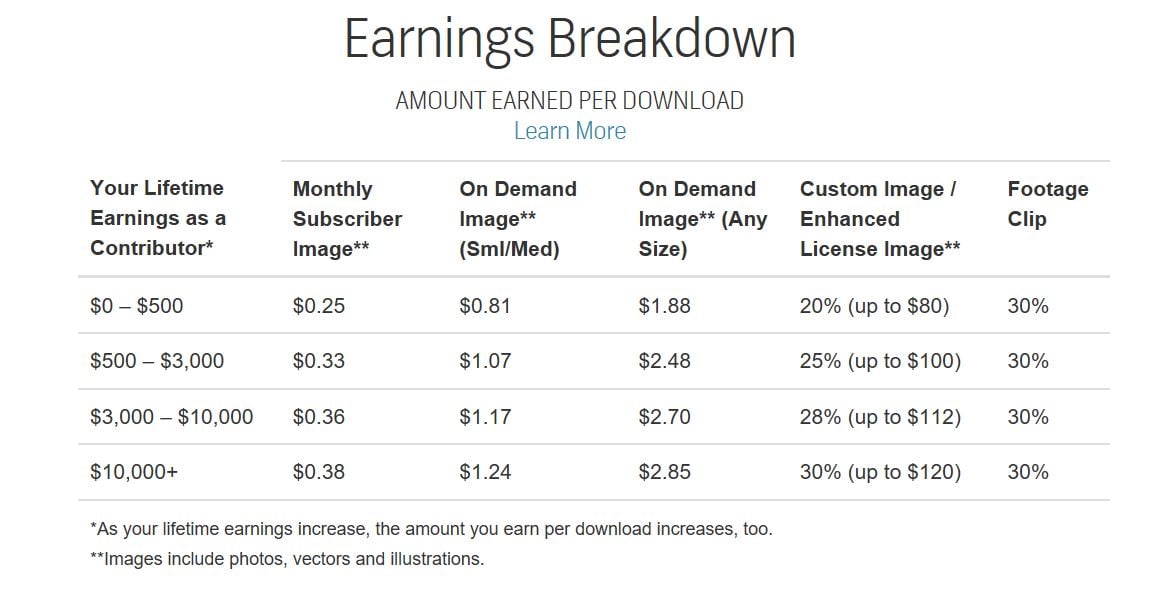
Referral Earnings
In addition to making money by selling your own photos, you can also earn money by referring other photographers/contributors. For the first two years after one of your referred contributors is approved, you earn 4 cents every time one of their images is downloaded. For videos, for the first year after a contributor you referred is approved, you will earn 10% of the sale price each time someone downloads one of their clips.You can also earn by referring customers to Shutterstock – 20% of their first payment, up to $200.
Keep in mind that Shutterstock reserves the right to hold onto your referral payments for up to 90 days from the date that the contributor or subscriber you referred creates his or her Shutterstock account.
Shutterstock: +Getting Paid
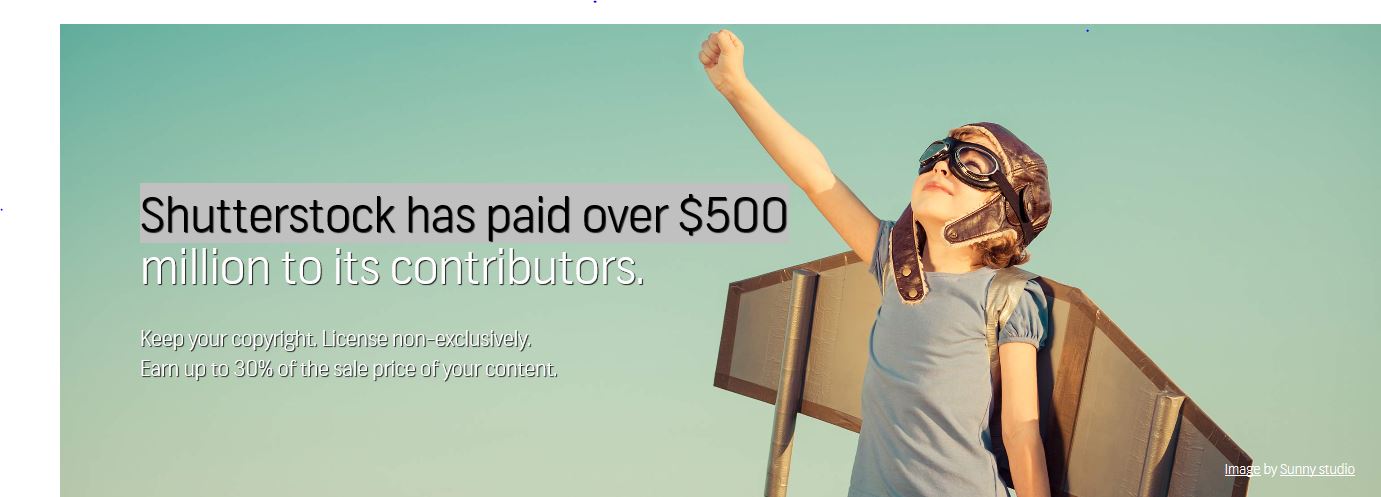
Shutterstock’s payment cycles are monthly and restart on the 1st of the month. To receive payment, your earnings must reach the minimum payout amount set up for your account. Some prefer to keep it at the $35 minimum allowed, but others prefer to set higher to avoid more Paypal fees. If you reach your minimum amount, you will receive an email letting you know about the payment you will receive. Shutterstock then pays through Paypal, Payoneer, or Skrill sometime between the 7th and 15th of the month. If you prefer to be paid by check, those are processed around the 15th of the month. Checks typically take 2 to 4 weeks to arrive.
A few other things to keep in mind before you get paid:
- You must have an approved tax form on file.
- Some countries require a 90-day waiting period.
- You will not receive payment if your account is disabled or under investigation.
Shutterstock: How Do I Become a Contributor?
Shutterstock recently implemented several changes to make it easier for photographers to contribute their images.- Simplified Registration Process. To become a contributor, all you have to do is enter your address and contact information, then start submitting content. This makes it easier for contributors to start earning money.
- Submitting Content. Shutterstock’s newly designed contributor content uploading tool makes it easier to tag and label content. It now offers suggested keywords, the ability to make multiple selections, and simpler content status options. All of this makes your content easier to find and reduces the amount of time and effort it requires to upload photos.
- Getting Paid. Shutterstock now pays via Paypal, Payoneer, Skrill, or check.
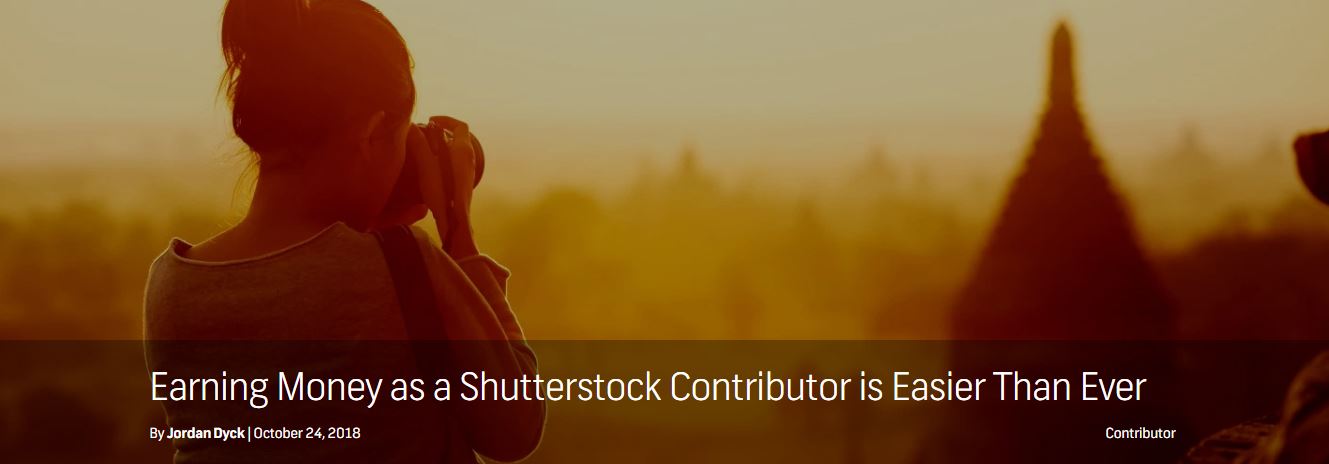
Shutterstock Account Registration
To be a Shutterstock contributor, you must be at least 18 years old. You also cannot share an account with anyone else. Depending on what country you are in, you must provide any legal documentation – such as tax forms – that your country requires. You can only open one Shutterstock account unless they grant you permission to open a second one.- You must be the sole owner of any photos or videos that you contribute.
- Your commercial photos cannot include any type of copyrighted material, such as sculptures, artwork, architecture, and so on. To use, you must submit releases.
- Photos for commercial use can’t have any trademarks, logos, or marks that can be identified (like license plate numbers). To use, you must submit releases.
- You can’t submit photos that were created “in a manner that violates human rights.”
- Don’t add watermarks or copyrights to your photos.
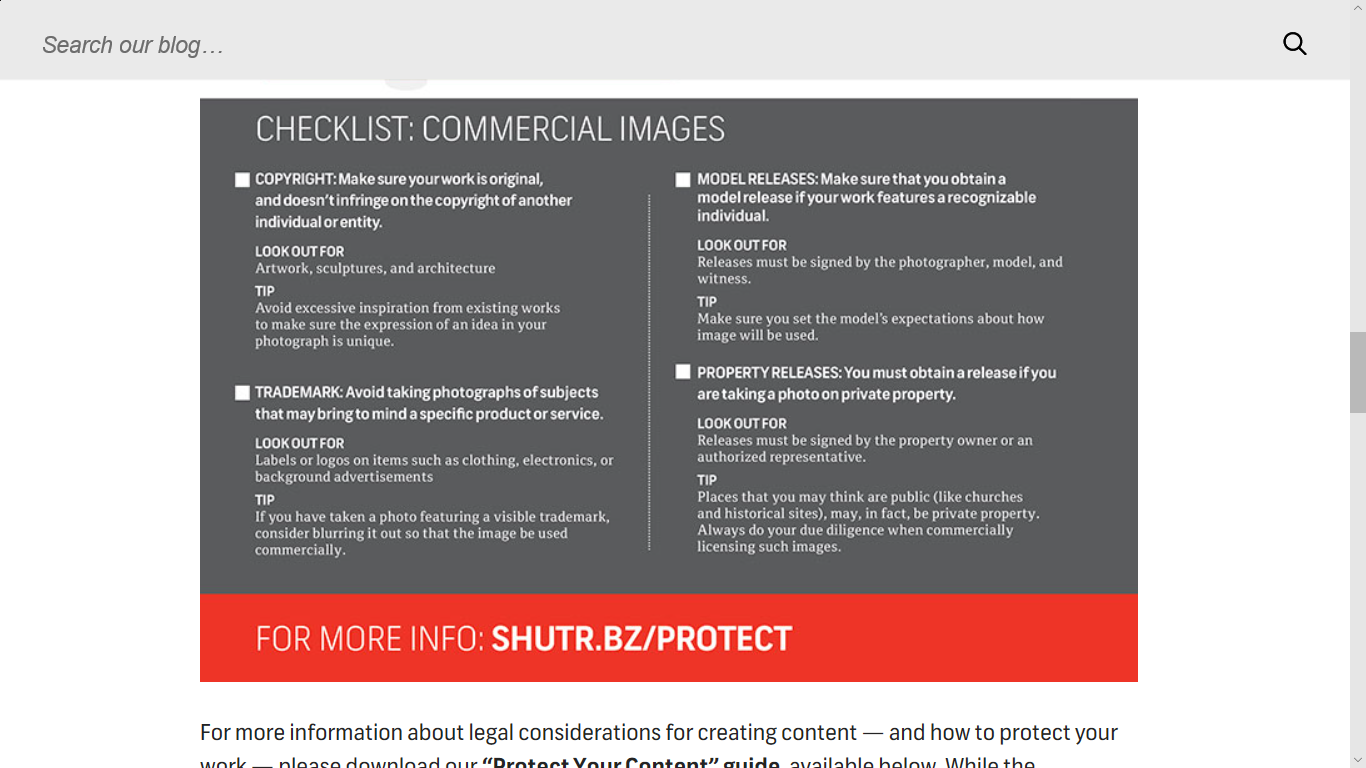
Shutterstock Account Regulation
- Shutterstock will warn you, and eventually terminate your account, if they see repeated issues related to your account activity or content submissions. Examples include:
- Resubmitting the same photos that were previously rejected without addressing the rejection reasons.
- Sharing a Paypal, Payoneer, or Skrill account with another contributor.
- Submitting photos that they feel is “excessively inspired” by someone else’s work.
- Copying someone else’s entire description and keywords for their photo(s).
- Title spamming – i.e., repeating a word in the title
- Keyword spamming – i.e., using keywords that are irrelevant to the image.
- Adding keywords back after they were removed by an administrator, modifying a caption that was edited by an administrator, or adding restricted keywords after your content was approved.
- Using inappropriate keywords (e.g., sexy, nude, etc.)
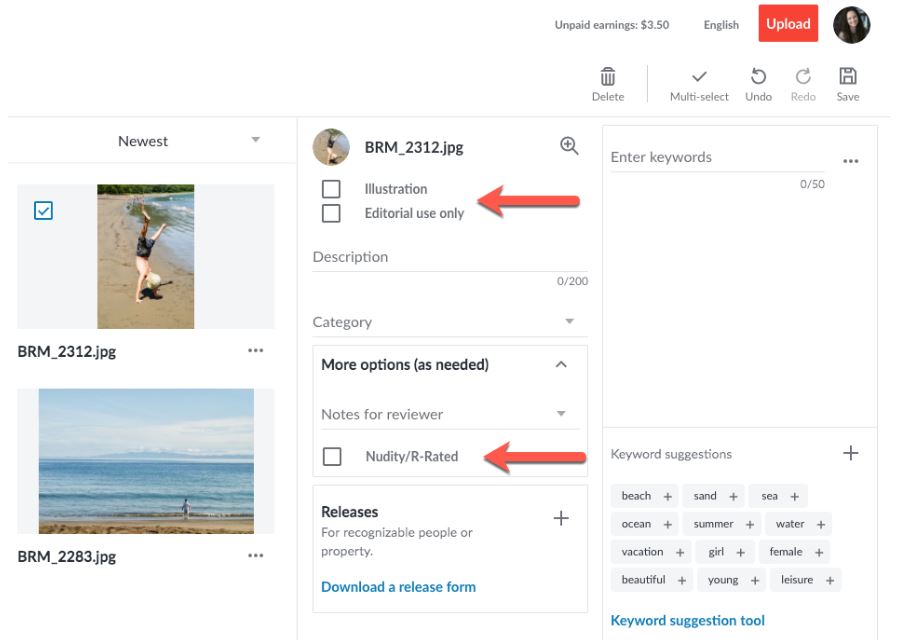
Shutterstock Releases
Shutterstock requires more releases than some other microstock sites. Any commercial image that includes an identifiable person requires the appropriate adult or minor model release. Photos of private property require property releases.- Nudity: Shutterstock does allow nudity of “artistic value,” but the model must be at least 21 years old and you must provide a model release and a photo ID of the model. Shutterstock has the sole discretion on whether or not to accept nude photos. No photos should be x-rated or contain any illegal content.
- Artwork: Images containing artwork – including sculptures, paintings, architecture, etc. – requires property releases as well.
- Vintage Images: Shutterstock may choose to accept vintage images if it’s not in the public domain, but they must have model and/or property releases.
- 3D Interiors: Images with a 3D interior rendering must have a property release with the name of the software program that you used to create the image and that you have the right to license content in the 3D rendering software.
Submitting Photos to Shutterstock
Shutterstock accepts both JPEG and TIFF files, and they must be at least 4 megapixels. Files under 50 megabytes can be uploaded directly from your account’s upload page. Larger files have to be uploaded via FTP.In addition to uploading your photos, you need to add metadata – i.e., the title (description), key words, and category. Once your photos have successfully uploaded you will need to enter titles (description), keywords, and categories. This information is known as metadata, and makes it possible for people to discover your photos. We’ve published some tips here: Title and Keyword Guidelines, Policies and Best Practices. Metadata can be added to multiple images at once by clicking the Multi-select option.
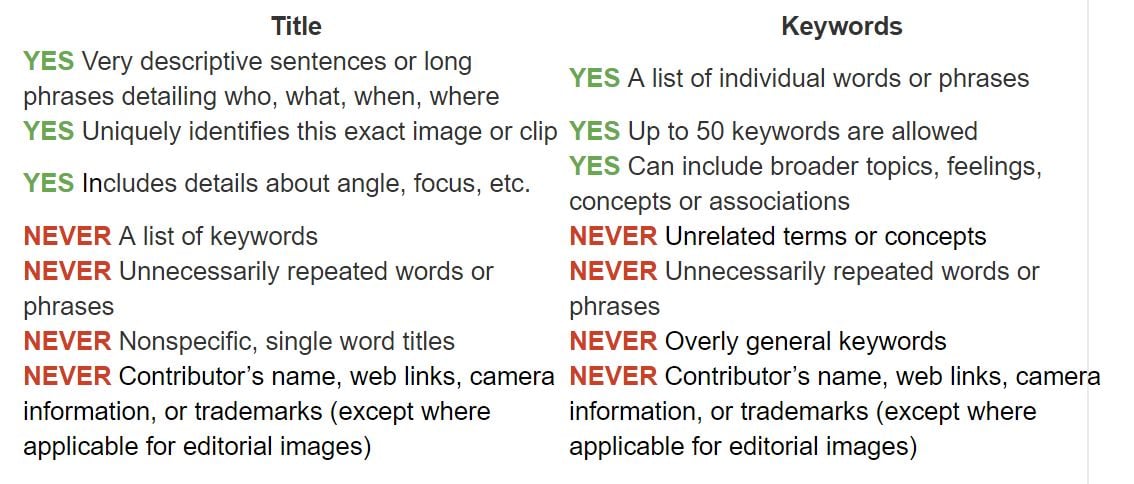
The Review Process
Shutterstock’s review team is made up of a global network or professionals who have a vast amount of experience as artists. They are also trained on all of Shutterstock’s technical and metadata standards and compliance policies.Reviewers will judge your photos on the following:
- Technical execution – including things like lighting, noise, and focus.
- Metadata – your titles and keywords are looked at to ensure they are both accurate and relevant, and that they meet Shutterstock’s compliance restrictions.
- Intellectual property – reviewers look to make sure there are no intellectual, trademark, or copyright violations.
- Releases – reviewers make sure all the proper releases have been filed.
- Policies – reviewers make sure that all submissions adhere to Shutterstock’s various policies for things like similar content or spamming.
If your image is declined due to technical execution, you can request another reviewer look at it. Different reviewers have slightly different ideas on what is or isn’t acceptable.
Editorial Images on Shutterstock
In addition to commercial images, Shutterstock also accepts editorial images. However, images that are submitted as “editorial” that are obviously trying to avoid the commercial model release requirement will not be accepted. Editorial images cannot be used commercially.Editorial images must fall under one of two categories:
- Documentary images: Photos that document an event or human interest subject
- Illustrative images: Staged photos that illustrate an event or subject of human interest
- Meet Shutterstock’s editorial image quality requirements
- Meet Shutterstock’s documentary or illustrative editorial category
- Include an editorial caption and appropriate keywords
- Be tagged as an editorial image when submitted
The quality for documentary editorial images is more forgiving, but the images must accurately and honestly communicate the subject or event. When possible, images should be left unaltered, although a few minor technical enhancements are allowed if needed to improve the quality of the image.
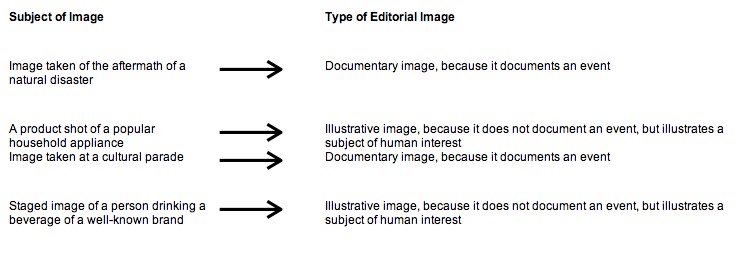
All editorial images must be accompanied by a caption, which need to include the who, what, where, when, and why of the photo. The caption should be accurate and relevant, and must be submitted in the proper editorial format:
CITY, STATE/COUNTRY – MONTH DAY YEAR: Factual description of the image, consisting of who and what the image represents and if necessary, a qualifying newsworthy statement of objective fact.
Editorial content also needs to be selected for editorial use when you upload your images. This can be done by selecting “yes” from the “editorial” dropdown menu in your content editor.
When listing keywords for your editorial photos, you need to include the words “illustrative” and “editorial” or you can list “illustrative editorial.” Editorial keywords can include product brand names if they accurately describe the photos.
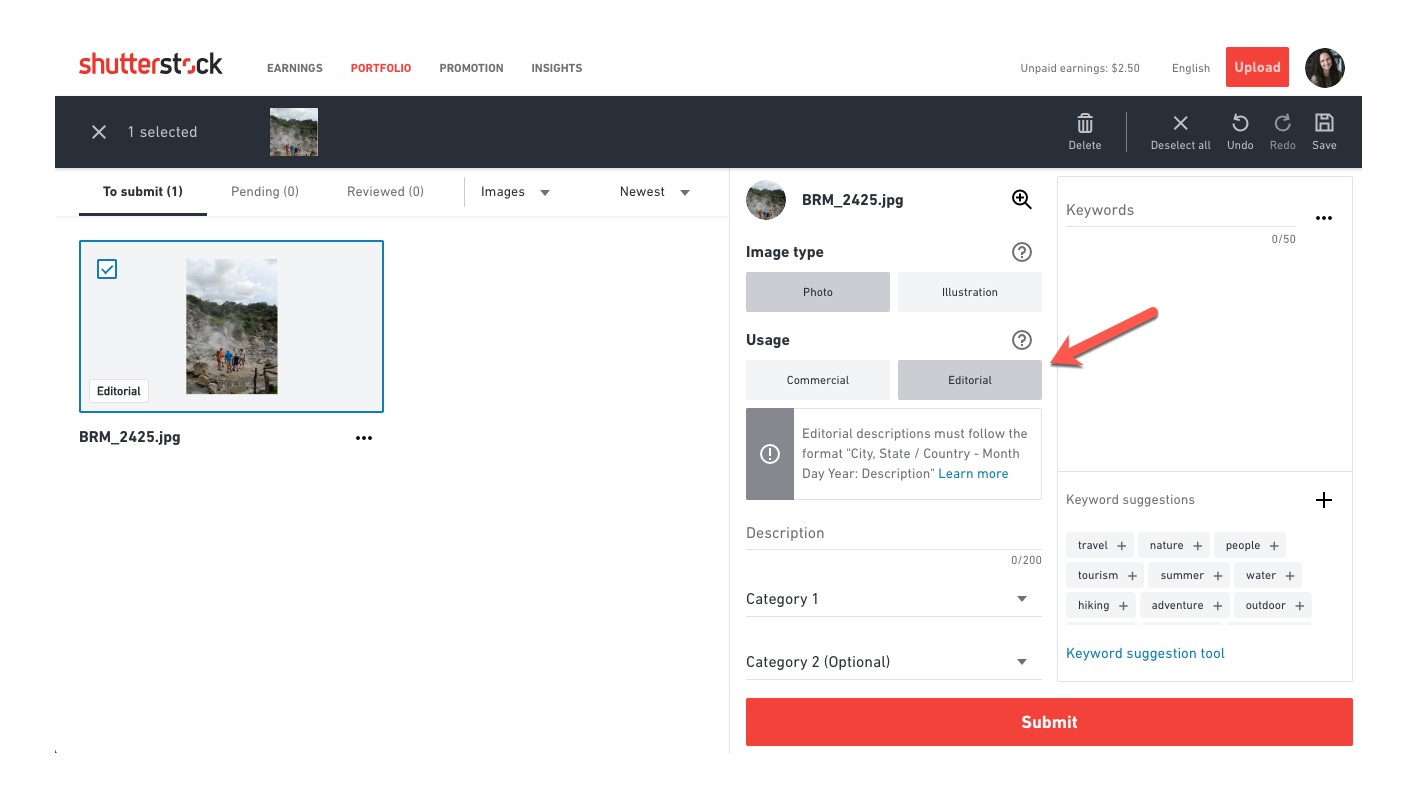
Tips for Selling Your Photos on Shutterstock
There’s a lot of competition on Shutterstock, but that doesn’t mean you won’t sell photos. Here are some ideas to help you get noticed:Keywords. Shutterstock allows you to use up to 50 keywords per image. The more you use, the better the chance of your photo being discovered. To get an idea of what keywords to use, look up similar photos on Shutterstock and see what words they are using – but don’t copy them precisely. Also, make sure the keywords relate to your photos.
- Captions. Make your captions long and descriptive.
- Think creatively. Try to come up with images that are not overpopulated on Shutterstock. You’ll have less competition.
- Editorial photos. If there’s a newsworthy event in your area, it’s smart to take some photos because you may be the only Shutterstock photographer covering the event.
- Upload a few photos regularly, not all at once. Shutterstock has a category that shows new photos, so you want to space out your images. That will allow you to show up as fresh content.
- Create sets. Place your photos in sets, or categories. This helps you organize your photos, but also helps buyers get a better idea of the types of pictures you offer.
- Read the contributor blog and follow on Twitter. Shutterstock’s contributor’s blog and Twitter page have good information to help you on your Shutterstock contributor journey.
- Check out their monthly shot list. It highlights which photos were most requested on Shutterstock and can help you learn what sells.
- Study the 2019 creative trends page. This shows what’s expected to be popular in the coming year based on billions of searches from Shutterstock customers.
Shutterstock: The Bottom Line

Shutterstock is one of the most popular microstock sites in the world. As a contributor, Shutterstock has several advantages. Their payment percentage is higher than some other microstock sites, their minimum payout amount is less than most, and they offer a few different options to help you earn more money. Shutterstock is also non-exclusive, so you can share the photos you publish on Shutterstock on other non-exclusive microstock sites.
Remember, when submitting to Shutterstock, you should regularly upload new photos, rather than loading them all at once. That allows your images to be displayed in the fresh content area, giving your image increased exposure.
An alternative to Shutterstock; http://www.photography-jobs.net/?hop=darryl54
No comments:
Post a Comment
Note: Only a member of this blog may post a comment.